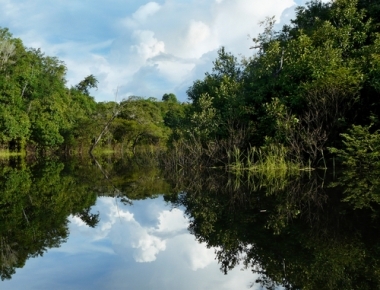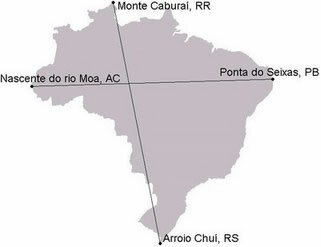Located in the Northeast Region, the state of Alagoas has 27,779,343 square kilometers. According to data released in 2010 by the Brazilian Institute of Geography and Statistics (IBGE), the population total is 3,120,494 inhabitants, with a demographic density of 112.3 inhabitants per square kilometer. This federative unit has a developing economy, being one of the smallest in Brazil.
In 2008, the Gross Domestic Product (GDP) of Alagoas reached the mark of 17.8 billion reais, contributing only 0.7% to the Brazilian GDP; at the regional level, its share was 5.1%. According to IBGE data, the composition of Alagoas' GDP is as follows: agriculture 6.8%, industry 24.5% and services 68.7%.
Farming, developed in a region that extends from the coast to the Zona da Mata, is an essential component of the state's economy. Alagoas is the fifth largest national producer of sugarcane. Other important crops are rice, beans, cassava, corn, bananas, pineapples, coconuts, oranges, cotton and tobacco. The state also has herds of cattle, horses, goats and sheep.
The industrial sector, which accounts for 24.5% of the economy, operates in the following segments: food, sugar, alcohol, textiles, chemical, chlorochemical, cement, mining, oil and natural gas production (Alagoas has important oil and gas reserves Natural).
Do not stop now... There's more after the advertising ;)
Tourism is the main component of the service sector, in addition to being the fastest growing activity in the state. Alagoas has 40 municipalities with tourist potential, where visitors can enjoy beautiful beaches, rivers and historic cities. Among the beautiful beaches are those in the Metropolitan Region of Maceió, Praia do Francês (main tourist destination) and Praia de Parapueira. Marechal Deodoro, the former capital of Alagoas, preserves the buildings from the colonial period. Another important attraction is the São Francisco River, better known as “Old Chico”.
The main export products are, respectively, cane sugar, ethyl alcohol, other sugars and ethylene chloride. Imports are: fertilizers and fertilizers, wheat, products from the chemical industries, fertilizer components, plastic, rubber and molybdenum ore.
By Wagner de Cerqueira and Francisco
Graduated in Geography
Brazil School Team
alagoas - Northeast region - geography of Brazil - Brazil School


